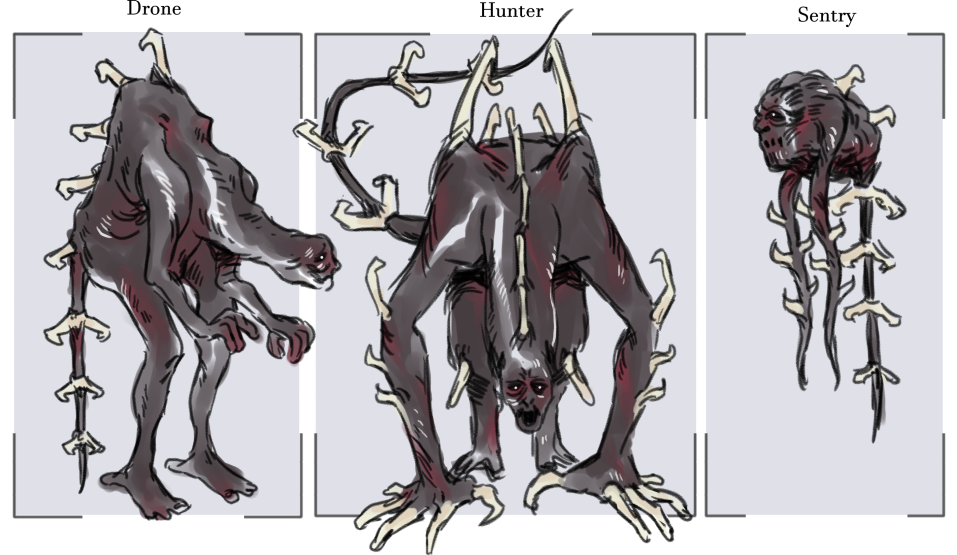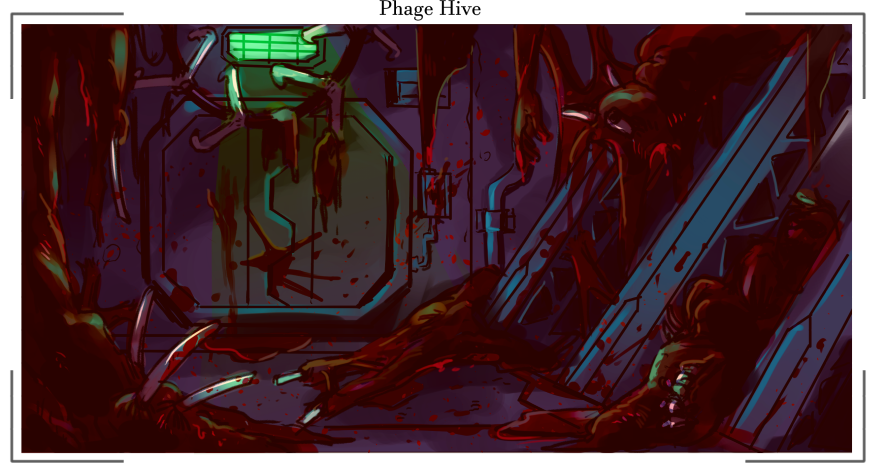Mutabilis Informis Plaga, henceforth to be referred to as the Phage, are humanity’s first encounter with life not of our cradle world, Earth. They are also the first brush with near total extinction for the human race. Together with hands-on study and previously existing data analysis, this paper hopes to provide the currently most comprehensive explanation and examination of Phage behavior and biology.
This analysis of phage alien biology has included both vivisection and dissection of captured specimens by both authors, as well as copious data extraction of previous papers and research preformed by SAINT PHARMA, PyramisDATA, LaGrange 4 Library, Mars GHS, and FrontierInfo.
Dissection and observation corroborate previous findings that Phage possess a hivemind-like connection via a psionically active organ located at the base of the brain-stem. This organ helps phage consciousnesses network, allowing for higher levels of problem-solving and intelligence when within range of other like resonances. Data and analysis finds that while higher intelligence is achieved, no matter the size of a phage gathering, human-like intelligence is never displayed. Problem-solving reaches that of the chimpanzee or gorilla with no documentation of self-awareness or passing of the mirror test.
Analysis of the physical features reveal the bone-like makeup of the phage’s non-manipulated form appear to be extremely dense, speculated to compensate for the lack of use in zero G while the phage are in dormant drifting space nests. Their muscle sinew is very sparse and extremely resistant to radiation. Though unproven, the current theory for the origin of the species is a planet with a very weak atmosphere where solar radiation was many times stronger than earth.

When this sinew comes in contact with organic cells of living tissue not of Phage origin, it is shown to release a bacteriophage-like secretion that invades and takes over the outside tissue which the phage then controls with is psionic organ. This leads to the parasitic like manipulation or ‘zombie’ like control the Phage exude over its prey. Once the long spinal appendage has full contact, the prey target loses full control and the Phage begins its cancerous manipulation of the prey’s tissue, organs, and cells.

Infested prey become the new weapons of the phage, the organic manipulation of the controlled tissue allows them to grow and adapt to become more efficient hunters of their new food source. War-time data shows, as they become more efficient they start to amass dead or live prey in re-purposed structures. These new ‘hives’ become breeding and feeding grounds, and infestation sites for newly hatched phage.

This parasitic way of hunting and hive mind like behavior leads to the Phage life cycle of dormancy, mass propagation upon a discovery of a food source, followed by dormancy again after complete consumption of food source.
The results of this research are conclusive in confirming the various outcomes of anecdotal data and war-time studies. It can be confirmed that while the Phage is a true extraterrestrial species and proof of life beyond the sol system, they exhibit no human-like intelligence and can in fact be classified as animalistic in behavior. Their threat to the human species was not in anyway meditated and was merely the execution of the phage’s natural survival behavior.